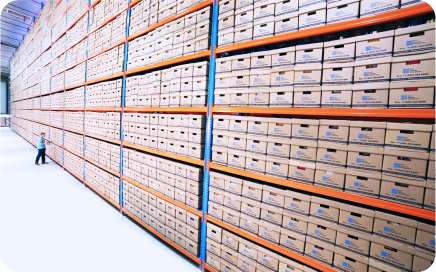Efficient Order Processing for Wholesale Businesses: A Guide to Better Flow
By Rackbeat June 20, 2025

Efficient Order Processing Is the Cornerstone of Wholesale
Every time you receive an order, a chain reaction is set off – from inventory checks and picking to dispatch and stock updates. If even one link in that chain breaks, it can lead to delivery delays, incorrect shipments, internal confusion – and unhappy customers.
In a day-to-day filled with countless SKUs, fluctuating suppliers, and increasing expectations from both B2B clients and end-users, ensuring that your order processing runs like a symphony has never been more important.
In this guide, we share five tips on how to achieve efficient order processing for wholesale businesses – while also getting your order management, inventory management and purchasing management under control.
1. Create Synergy Between Orders, Inventory, and Purchasing
An order process rarely starts with the order itself – it begins long before. If you don’t have a clear overview of what’s in stock, what’s en route from suppliers, and which items are on backorder, you risk overpromising.
That’s why it’s crucial for your inventory, order, and purchasing management to work hand in hand. When your systems share real-time data, you don’t just get an overview – you get a flow that can handle large volumes without breaking down.
Especially vital is the integration between your WMS (Warehouse Management System) and your webshop, which:
Ensures you only sell items that are in stock – avoiding disappointed customers and manual corrections
Sends automatic reorder alerts when stock levels reach a minimum threshold
Eliminates double entry and discrepancies between your warehouse and accounting system
Optimizes purchasing – by giving you constant visibility into what’s incoming and when
2. Use Warehouse Scanners to Reduce Errors and Speed Up Picking
If your warehouse staff still relies on printed pick lists or manual spreadsheets, you’re likely dealing with unnecessary errors and wasted time. It’s easy to miss a line, mix up products, or forget to record what’s been picked and shipped.
Plus, having to move back and forth between shelves and a computer eats up both time and efficiency.
A handheld scanner streamlines picking and registration – making the process much faster, more accurate, and far less reliant on manual routines.
With a warehouse scanner, you can:
Pick the right items – in the right order, saving time and minimizing errors
Register shipments instantly, without returning to a computer
Get automatic stock updates, keeping your system accurate at all times
The result? Fewer picking errors, faster fulfillment, and a calmer warehouse environment.
3. Standardize Your Order Flows – and Automate Where You Can
Many businesses handle orders differently depending on the employee, customer, or product type. While that may seem flexible, it often leads to unnecessary complexity and inconsistent workflows.
When procedures vary from order to order, the risk of misunderstandings, missed steps, and fulfillment errors increases. It also becomes harder to train new staff and scale processes.
To improve flow, save time, and minimize errors, you should:
Establish consistent procedures for the entire order process – from receipt to delivery
Let the system auto-generate pick lists and packing slips to save time and reduce oversight
Set up automated customer notifications, such as order confirmations and status updates
Standardization ensures your employees follow the same processes – and your customers receive consistent, professional service.
4. Gain Insight with Dashboards and Exportable Data
A dedicated WMS for wholesale turns your data into a powerful tool – instead of burying it where it brings no day-to-day value.
Real-time insights into warehouse and order activity allow you to react quickly, prioritize effectively, and base decisions on solid data rather than gut feeling.
Use dashboards and reports to:
Monitor orders in real time – and catch bottlenecks early
Identify process inefficiencies and improve workflows
Gain insight into KPIs like pick times, order sizes, and delivery times
Export data to Excel – to document fees, forecast demand, or create custom analyses
This gives you the foundation for data-driven decisions – and better planning.
5. Choose a System Designed for Wholesale
A WMS or order management system is not “one size fits all.” What works for retail or manufacturing may not suit a wholesale business – which typically deals with a larger product range, more order lines, and complex customer and logistics requirements.
Wholesale comes with specific demands – and your system must be able to support them if you want reliable operations and room to grow.
Make sure your system supports:
Handling large volumes of products and order lines – without slowing down
Individual pricing and discounts per customer – aligned with negotiated terms
Location management and batch tracking – so you know where each item is and which delivery it belongs to
Integrations with webshop, accounting, and shipping – eliminating double work
A great wholesale system isn’t just technical – it’s designed for the real-world demands of your warehouse and order processing.
Ready for Better Order Flow?
Efficient order processing for wholesale businesses requires more than good intentions.
It requires a system that supports your workflows – and provides the visibility, automation, and data foundation that make your business more scalable.
Want to see how Rackbeat can help you take control of your inventory and order processing?
👉 Book a no-obligation meeting with one of our advisors, who will walk you through the system and answer all your questions.




